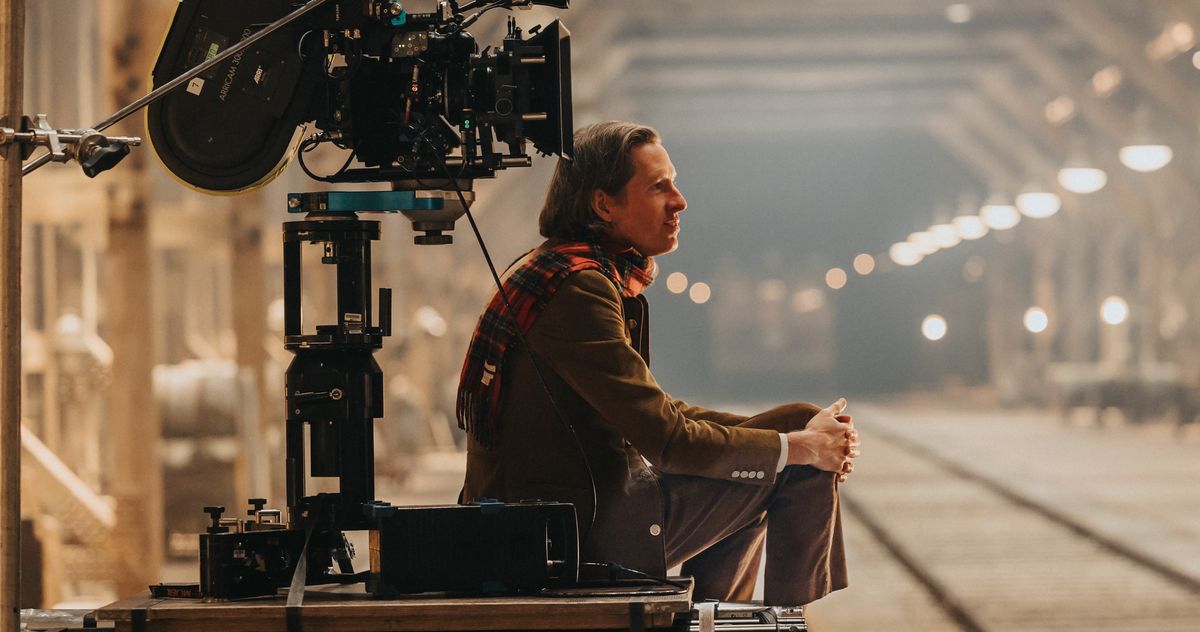Wes Anderson's Cinematic Universe: A Study In Contrasts

Welcome to your ultimate source for breaking news, trending updates, and in-depth stories from around the world. Whether it's politics, technology, entertainment, sports, or lifestyle, we bring you real-time updates that keep you informed and ahead of the curve.
Our team works tirelessly to ensure you never miss a moment. From the latest developments in global events to the most talked-about topics on social media, our news platform is designed to deliver accurate and timely information, all in one place.
Stay in the know and join thousands of readers who trust us for reliable, up-to-date content. Explore our expertly curated articles and dive deeper into the stories that matter to you. Visit Best Website now and be part of the conversation. Don't miss out on the headlines that shape our world!
Table of Contents
Wes Anderson's Cinematic Universe: A Study in Contrasts
Wes Anderson. The name conjures images of meticulously symmetrical compositions, pastel palettes, and quirky characters embroiled in whimsical yet often melancholic narratives. More than just a director, Anderson has cultivated a distinct and recognizable cinematic universe, a recurring cast of actors populating his visually stunning, emotionally resonant films. But beneath the surface of whimsical charm lies a complex tapestry of themes, exploring profound contrasts that resonate deeply with audiences. This article delves into the key elements that define Anderson's universe and the compelling contradictions that make his work so uniquely captivating.
A World of Exquisite Artificiality
Anderson's films are instantly recognizable for their stylistic consistency. The deliberate artificiality, often described as "artificial realism," is a core component of his aesthetic. He employs meticulously designed sets, symmetrical framing, and a specific color palette to create a visually striking, almost theatrical experience. This artificiality, however, isn't merely stylistic; it serves to highlight the emotional core of his narratives. The perfectly ordered world often contrasts sharply with the chaos and turmoil of his characters' lives, amplifying the emotional impact. Think of the meticulously constructed environments of The Grand Budapest Hotel contrasted with the turbulent political climate and personal tragedies within.
The Recurring Cast: Familiarity and New Beginnings
One of the hallmarks of Anderson's universe is his recurring cast of actors. Bill Murray, Owen Wilson, Edward Norton, and Jason Schwartzman, among others, populate his films, adding a layer of comforting familiarity for long-time fans. This consistent presence subtly links the films, suggesting a shared narrative space, even if the settings and storylines vary dramatically. Yet, each film also introduces new characters and fresh narratives, preventing any sense of stagnation. This balance between familiarity and novelty is key to the enduring appeal of Anderson's work.
Whimsy and Melancholy: A Delicate Balance
Anderson’s films are undeniably whimsical, filled with quirky humor and fantastical elements. However, beneath the surface of playful eccentricity lies a profound sense of melancholy. Themes of loss, loneliness, and the passage of time are consistently explored, often subtly interwoven with the lighter moments. This juxtaposition of whimsy and melancholy creates a unique emotional resonance, allowing audiences to both revel in the quirky charm and connect with the deeper, more poignant aspects of the narratives. Moonrise Kingdom, for example, perfectly embodies this delicate balance, presenting a charming coming-of-age story laced with undercurrents of sadness and uncertainty.
Nostalgia and Modernity: A Timeless Appeal
Anderson's films often evoke a sense of nostalgia, drawing on past eras and styles. From the vintage aesthetic of The Royal Tenenbaums to the 1960s setting of Moonrise Kingdom, his films tap into a specific sense of longing for simpler times. However, this nostalgia isn't simply a romanticisation of the past. The films engage with contemporary themes and issues, showcasing the complexities of human relationships and the enduring challenges of life. This ability to blend nostalgia with contemporary relevance contributes to the timeless appeal of his work.
Conclusion: The Enduring Power of Contrasts
Wes Anderson’s cinematic universe is a testament to the power of contrast. The interplay between artificiality and realism, familiarity and novelty, whimsy and melancholy, and nostalgia and modernity creates a unique cinematic experience that is both visually stunning and emotionally resonant. His films offer a compelling blend of escapism and profound emotional depth, ensuring their continued relevance and appeal to audiences worldwide. Are you a devoted fan? Share your favorite Wes Anderson film in the comments below!

Thank you for visiting our website, your trusted source for the latest updates and in-depth coverage on Wes Anderson's Cinematic Universe: A Study In Contrasts. We're committed to keeping you informed with timely and accurate information to meet your curiosity and needs.
If you have any questions, suggestions, or feedback, we'd love to hear from you. Your insights are valuable to us and help us improve to serve you better. Feel free to reach out through our contact page.
Don't forget to bookmark our website and check back regularly for the latest headlines and trending topics. See you next time, and thank you for being part of our growing community!
Featured Posts
-
 Can Trump And Putin Unlock Peace In Ukraine Us Pushes For Their Involvement In Talks
May 17, 2025
Can Trump And Putin Unlock Peace In Ukraine Us Pushes For Their Involvement In Talks
May 17, 2025 -
 Closer Ties Analyzing Britains Return To The Eu Fold
May 17, 2025
Closer Ties Analyzing Britains Return To The Eu Fold
May 17, 2025 -
 Mlbs Early Season Warning Signs 10 Stats To Analyze
May 17, 2025
Mlbs Early Season Warning Signs 10 Stats To Analyze
May 17, 2025 -
 Cybersecurity Failure Co Ops Close Call Highlights Systemic Risks
May 17, 2025
Cybersecurity Failure Co Ops Close Call Highlights Systemic Risks
May 17, 2025 -
 Faster Travel To The Games La 2028 Explores Air Taxi Options
May 17, 2025
Faster Travel To The Games La 2028 Explores Air Taxi Options
May 17, 2025
